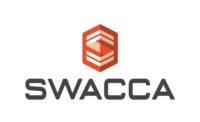Elk Grove Technology Park Group Unveils Potential $1 Billion Development Plans

Photo courtesy of Elk Grove Village.
Brennan Investment Group released detailed plans to build a $1 billion development in Elk Grove Village, Illinois.
Brennan Investment Group is currenlty developing the Elk Grove Technology Park on the 85-acre Busse Farm between East Higgins Road and Oakton Street. They want to construct more than 1.1 million square feet for high-end industrial manufacturers and data centers. The first hurdle for approval of the project will be gaining a positive recommendation from the village plan commission during a meeting.
In July, the village and Brennan Investment Group announced plans for the technology park on the farmland owned by the Busse family since the 1800s. The site has long been viewed as prime real estate for development, twice being considered for a new Chicago Bears stadium.
According to documents submitted to the plan commission, the technology park may include up to nine buildings with a main thoroughfare connecting King Street off Higgins Road with Kent Avenue off Oakton Street.
In the first phase of development, the group would build four buildings along Higgins Road with combined space of approximately 510,000 square feet. The phase would also include construction of infrastructure such as ponds, sewer systems and streets. Two properties for retail and mixed-use developments would be on Higgins Road.
The other buildings would be constructed to fit the needs of future companies that want to locate in the technology park.
Brennan Investment Group plans to demolish the five single-family homes on Stanley Street, two industrial buildings on Lively Boulevard and the fire station at the intersection of Oakton Street and Lively Boulevard. The group wants to begin construction next spring.
Meanwhile, the village has started working on plans to create a 165-acre tax increment-financing district, or TIF, which includes the technology park and surrounding property.
TIF districts are economic development tools used by local municipalities to spur growth in blighted or underperforming areas.
Increased tax revenues generated by new developments in TIF districts are diverted to a fund used to pay for improvement projects within the area. Throughout the 23-year life of the TIF district, other taxing bodies continue receiving tax revenues equal to the amount received before the properties went up in value.
Looking for a reprint of this article?
From high-res PDFs to custom plaques, order your copy today!





